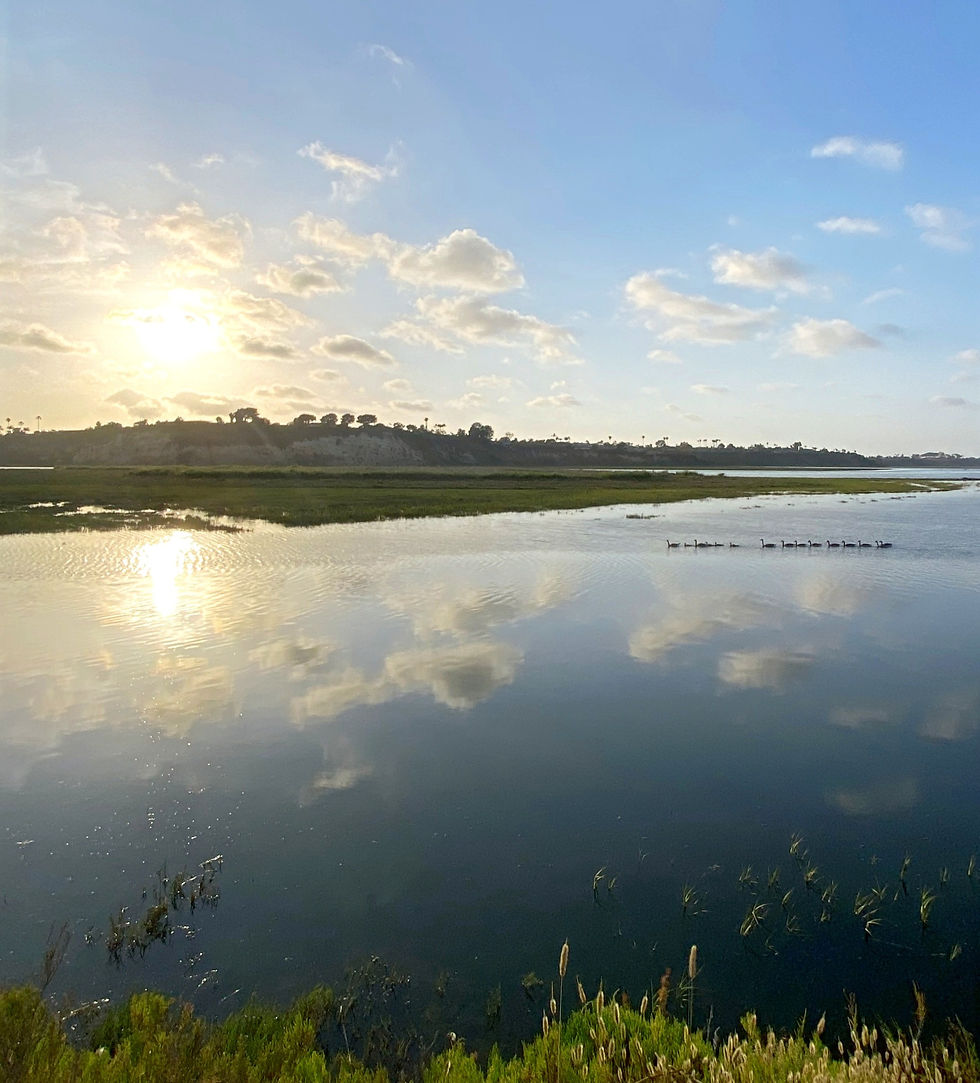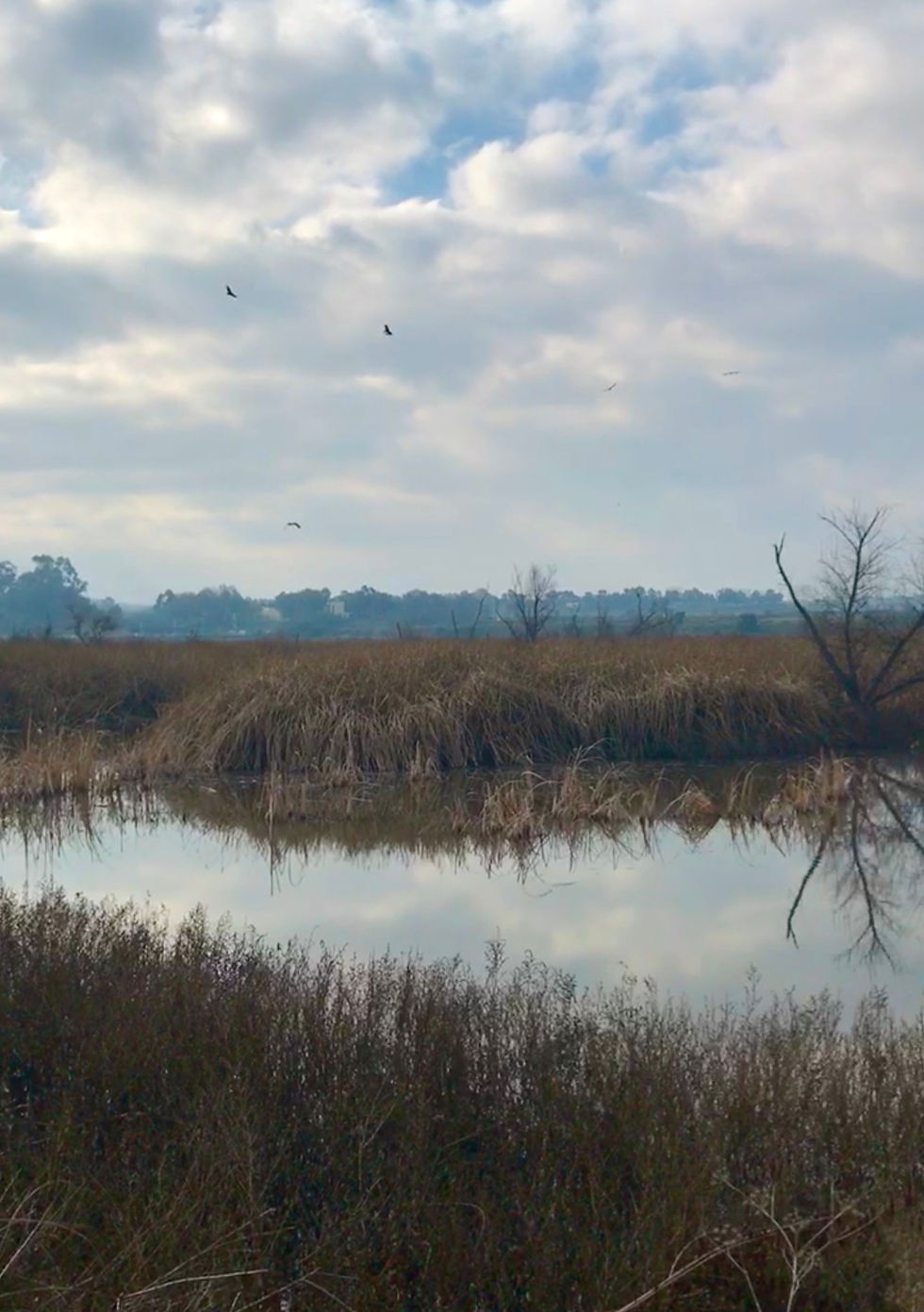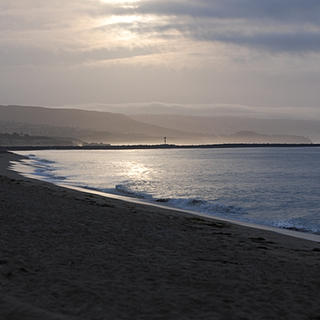Where We'd Be Without Wetlands
- OC Habitats
- Sep 21, 2020
- 4 min read
Looking at the coast of Orange County now, it is difficult to believe it was once covered by wetlands. Even looking beyond Orange County, our Earth has seen a large decline in wetland habitats -- the impacts of which are near immeasurable as they are among the most productive and valuable ecosystem in the world.

But why should we care about wetlands? Why are they so important?
To begin, wetlands act like a living filter that is constantly and naturally improving water quality. Acting as a sponge before water flows reach their final destinations (such as a lake or the oceans), wetlands remove toxic chemicals that run off from industrial sites or our streets, pesticides from agricultural areas, or any sediment or materials that may harm waterways. This provides healthy ecosystems for wildlife to flourish and for people to enjoy recreationally.
As the Earth faces the many impacts of climate change, wetlands can play an important role in protection and mitigation. Firstly, they act as a major carbon sink taking in carbon dioxide from the atmosphere that is then used and stored in their plant communities and in the soil. Additionally, as sea levels rise and weather events become more extreme, they can act as a buffer for neighboring habitats (natural or not) to provide flood and erosion protection.
Wetlands are home to a wide diversity of wildlife -- including plants, invertebrates, fish, amphibians, birds, and mammals. According to the Environmental Protection Agency, more than one-third of the United States’ threatened and endangered species live in wetlands, and almost half use the habitat at some stage in their life cycle. Many of them are even designated as Important Bird and Biodiversity Areas, which are regions internationally recognized for being critical habitat for the conservation of bird populations, including the tens of thousands of birds who utilize them on their migratory pathways.
Lastly, the health and prosperity of these ecosystems have substantial impacts on the economic value of the fisheries that depend on them. As previously mentioned, many fish species use wetlands and estuaries at some stage in their life cycle, but that includes 75% of all species commercially harvested in the United States (EPA). By using these regions as breeding and nursing grounds which will directly influence the health and size of the fisheries stock, wetlands are essential in maintaining the economies of those fisheries -- which were valued at $54.5 billion in 2000 (EPA).
So what are the causes of this disappearing act?
Most wetland loss can be attributed to some form of land use change. This can mean urban development, rural development (such as agriculture), or logging. Nowadays, the importance of wetland ecosystems is more widely recognized and mitigation plans are now developed to offset negative impacts from future developments. This means that after completing initial impact surveys, developers must develop a strategy to avoid ecological harm or compensate for that harm with enhancement or creation of wetland habitat.
Our own team here at OC Habitats is currently collaborating with Project Grow to undergo a restoration project at the Upper Newport Back Bay. This restoration is being done as part of a wetland mitigation plan for the Metropolitan Water District whose pipeline project is impacting riparian habitat. As a result, we are helping to remove an invasive species, Algerian sea lavender, from the site to allow native communities to return to the site.
We also frequently partner with the Huntington Beach Wetlands Conservancy to participate in restoration and clean-up days to help preserve our local wetland ecosystems.
Looking to explore some of our local wetland ecosystems? Here are two great locations that allow public access:

The Back Bay has a 10.5 mile paved path that loops around the 1000 acre preserve where visitors can enjoy walks, runs, or bike rides. You even have the option to kayak or paddle board through the bay to experience it from a whole new perspective. It is classified as an Important Bird and Biodiversity Area, so if you go at the right time you can catch an abundance of wildlife! There is free parking offered at various points around the bay including: the south end of Back Bay Drive, off San Joaquin Hills Road, or off Eastbluff Dr at the north end of the bay (all off of Jamboree Rd).

This reserve is a 1,300 acre coastal estuary that is home to over 200 different species of birds, making it a very population location for bird watchers and wildlife photographers. This area has a 4 mile trail that will take you across open water, through mud flats, and up to coastal dunes where you can get a view of the entire area. There are two main parking lots for the BCER: the first being across from the entrance of Bolsa Chica State Beach (on the inland side of PCH) and the second being on the corner of Warner Ave and PCH. Tip: Go earlier in the day to not only beat busy parking lots, but to see the wildlife when they’re most active!

This marsh, which is 300 acres of freshwater wetlands, offers a place to escape to nature in the heart of Irvine, California. The San Joaquin Freshwater Marsh, which is uniquely part of the University of California Natural Reserve System, plays an important role in water filtration as it is the last stop before urban runoff meets the Upper Newport Bay. While the southern half of the marsh does not allow public access you can find trails established on the northern part of the marsh between Michelson Drive and Campus Drive.Due to the number and paths and turns available, you can choose to explore 1 mile or up to 10 miles if you please!








Comments